
Jennifer Packer. Carolina, 2011.
Oil on linen.
Current show in NYC.
by Richard Passov
 Our uniform was a shirt tucked into jeans. Sandi stretched the smallest size over well-proportioned breasts, her black bra peeking through a run of buttons. Mine hung long in the sleeves and fell over my waist.
Our uniform was a shirt tucked into jeans. Sandi stretched the smallest size over well-proportioned breasts, her black bra peeking through a run of buttons. Mine hung long in the sleeves and fell over my waist.
I was trying to work my way through college in the kitchen of a teaching hospital on the campus where the ARPANET, precursor to the internet, was sending single word messages between the five nodes across the country capable of receiving messages. I was also trying to stay away from drugs. But when Sandi, in tight jeans, smiled over her shoulder, I chose to follow.
“You cool, right?” she asked.
We went through the seating area, out the front door, around to the right, into a curve in the architecture where some thoughtful gardener had planted the rose bushes that Sandi used as a shield. “Here,” she said, after taking a hit from a joint.
The dope tasted like street dirt I had undercut in South Central. A soft weight came over me. My host brought her palms together then shimmied to silent music.
When she stopped and looked past me, I turned to see a young black man with a small head wearing a ribbed wife beater over beady muscles. His colors, stuffed into a back pocket, crept around his leg.
“Hey Pea,” she said walking to him. “You know I like it when you come see me while I working.” Read more »
by Anitra Pavlico

The gap between the gravity of climate change and the average person’s ability to mitigate the crisis is utterly dispiriting. If individual action is required, we feel powerless because it defies logic that using a gallon of hot water plus soap to prepare a mayonnaise jar for the recycling bin will save the planet. If government action is required, we feel powerless because most governments are either falling short, or in the case of the United States, actively denying that there is a problem. It is enough to cause climate-change burnout.
I recently attended a talk given by the head of a local environmental group on the connection between people’s diets, especially the consumption of animal products, and climate change. The current situation is irrational when you consider sheer numbers. In the relatively near future, considering the planet is projected to hold 10 billion people by 2050, it won’t be a question of whether we can continue to eat this way, but to what degree we will have to cut back on animal products. At this time almost half of Earth’s land surface is occupied by the industrial livestock system. Cows, chickens, and their ilk require a huge amount of food and a surprising amount of water when you factor in cleaning their dwellings and disinfecting equipment. Instead of feeding humans directly, we feed a large portion of what we grow to animals to fatten them up. Immense amounts of water and fertilizer are used to grow grain to feed animals. Twenty billion food animals certainly do eat and drink a lot, and make a huge mess besides. Read more »
by Andrea Scrima
David Krippendorff is a US/German interdisciplinary artist and experimental filmmaker. Based in Berlin, he grew up in Rome, Italy, and studied art at the University of Fine Arts in Berlin, Germany, where he graduated with an MFA. His paintings, drawings, prints, films, and videos have been shown internationally, including at the New Museum (New York), ICA (London), Hamburger Kunsthalle (Hamburg), and the Museum on the Seam (Jerusalem). He has participated in three biennials (Prague, Poznan, Tel Aviv).
Krippendorff’s short film Nothing Escapes My Eyes is currently part of the group exhibition “The Women Behind” at the Museum on the Seam; it was also shown at the Belgrade City Museum for the 56th October Salon in 2016 and has been screened at numerous international film festivals, winning twice as Best Short Film. Kali, a short film based on Brecht’s Threepenny Opera, also features Palestinian actress Hiam Abbass; it premiered at the Braunschweig International Film Festival in 2017.

Andrea Scrima: David, I’d like to begin with a question about your previous work. For decades now, you’ve been incorporating imagery from popular culture; earlier works, particularly There’s No Place Like Home, Sleeping Beauty, and The Beautiful Island, drew on the hidden subtexts in well-known American movies, such as The Wizard of Oz and Gilda. What was the motivating force behind this line of inquiry?
David Krippendorff: I grew up on classic American movies. The Wizard of Oz was an intrinsic part of my childhood, so it felt very natural to work with these films, because I had a personal relationship to them. My interest was in uncovering the ideologies and desires present in these films, but hidden beneath a polished layer of glamour and storytelling. I’m also fascinated by how thin the boundaries have become between the personal and the mediated experience, and films—with their almost mythological function—are the perfect material for this inquiry. Read more »
by Brooks Riley
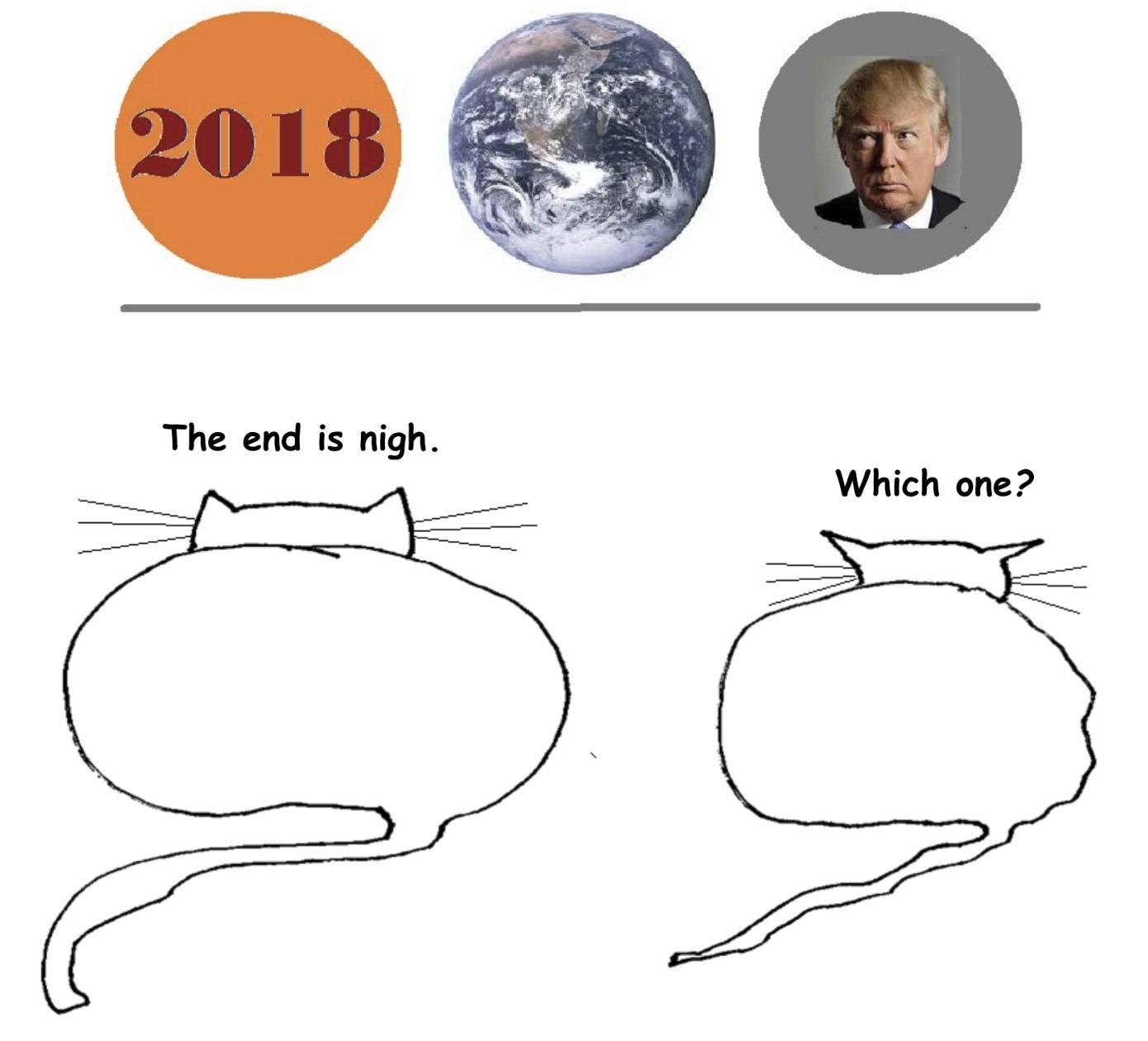
Sometime in 1993 Israel Kamakawiwo’ole, known as IZ to his many fans, calls his producer at 2AM and sets up a recording session ASAP. He records a handful of tunes, just his voice and ukulele, one tune after the other, all single takes, and goes home. One of those takes was a medley that inserted “What a Wonderful World” into “Over the Rainbow.” The medley was issued on Kamakawiwo’ole’s 1993 CD, Facing Future. In 1998 the medley was on the soundtrack of Meet Joe Black. In 2005 Facing Future went platinum (1 million or more units sold), the first Hawaiian album to do so. (Record label site for Kamakawiwo’ole.)
In this post I want to take a look at that medley and its subsequent history. The two songs in the medley are standards – a term of art in discussing pop music of the Big Band era and more recent music of that kind. Judy Garland recorded “Rainbow” for The Wizard of Oz at the height of the big band era, 1938. It became an instant hit and has been recorded hundreds of times. Armstrong recorded “Wonderful” in 1967, when big bands had been thoroughly eclipsed by rock and roll. It became a hit in the UK, but not in the USA. Armstrong’s recording got a second chance when it was used on the soundtrack of Good Morning, Vietnam in 1987. Though not the first, Kamakawiwo’ole’s cover of the song was one of the earliest.
by Bill Murray
 In the middle of the night of March 24, 1992, a pressure seal failed in the number three unit of the Leningradskaya Nuclear Power Plant at Sosnoviy Bor, Russia, releasing radioactive gases. With a friend, I had train tickets from Tallinn, in newly independent Estonia, to St. Petersburg the next day. That would take us within twenty kilometers of the plant. The legacy of Soviet management at Chernobyl a few years before set up a fraught decision whether or not to take the train.
In the middle of the night of March 24, 1992, a pressure seal failed in the number three unit of the Leningradskaya Nuclear Power Plant at Sosnoviy Bor, Russia, releasing radioactive gases. With a friend, I had train tickets from Tallinn, in newly independent Estonia, to St. Petersburg the next day. That would take us within twenty kilometers of the plant. The legacy of Soviet management at Chernobyl a few years before set up a fraught decision whether or not to take the train.
Monitoring stations in Finland detected higher than normal readings. The level of iodine-131 at Lovisa, Finland, just across the gulf, was 1,000 times higher than before the accident, according to the German Institute for Applied Ecology.
Russian authorities reported the accident in the media, and I think they felt self-satisfied for doing it, but Russian credibility had burned down with Chernobyl’s reactor 4. Any more, people thought the Soviets, as Seymour Hersh said about Henry Kissinger, lied like other people breathe. And as usual, solid information was hard to come by.
A news agency in St. Petersburg reported increased radiation, and the Swedish news reported panic in St. Petersburg. A lady in Tallinn that day told me her mother had called from St. Petersburg and they were closing the schools and sending children home to stay indoors. The Finnish Prime Minister fussed that seven hours passed before the Russians told him. It was frightening.
No one believed the plant spokesman when he said on TV, hey (big Soviet smile), no problem. No one trusted the Russians. Read more »
by Dave Maier
 It’s been a while since I posted on this issue, and I’ve already said most of what I intended to say about it, but things seem to be coming to a head in my own state, and I thought I’d report on that, including a couple of weird local wrinkles (the Garden State is a strange place). Three weeks ago, after months of missed deadlines, an adult-use marijuana legalization bill was approved by a joint (Assembly/Senate, that is, not … never mind) committee of the legislature, and may (note: may) be voted on later this year. If it is passed and signed into law by the governor – neither of which is a given – New Jersey would be the eleventh state to legalize adult use, and the second to do so by legislative action. (Washington and Colorado in 2012, Alaska and Oregon in 2014, California, Massachusetts, Maine, and Nevada in 2016, and Michigan in 2018 did so by voter referendum; Vermont did so by legislative action (in 2017, I think), although that state’s bill did not set up a legal market, which means that while it is legal to grow marijuana in one’s basement there, it remains illegal to buy seeds to do so.)
It’s been a while since I posted on this issue, and I’ve already said most of what I intended to say about it, but things seem to be coming to a head in my own state, and I thought I’d report on that, including a couple of weird local wrinkles (the Garden State is a strange place). Three weeks ago, after months of missed deadlines, an adult-use marijuana legalization bill was approved by a joint (Assembly/Senate, that is, not … never mind) committee of the legislature, and may (note: may) be voted on later this year. If it is passed and signed into law by the governor – neither of which is a given – New Jersey would be the eleventh state to legalize adult use, and the second to do so by legislative action. (Washington and Colorado in 2012, Alaska and Oregon in 2014, California, Massachusetts, Maine, and Nevada in 2016, and Michigan in 2018 did so by voter referendum; Vermont did so by legislative action (in 2017, I think), although that state’s bill did not set up a legal market, which means that while it is legal to grow marijuana in one’s basement there, it remains illegal to buy seeds to do so.)
In this Friday’s local newspaper, one Republican senator, an opponent of the bill, was granted the entire space of the letters page for a long guest opinion on the matter. I’ll try not to debunk his points one by one, which would be boring (not to mention inconclusive, as we’ll see), but I did have a few thoughts. Read more »
by Timothy Don
 I met Rene Magritte a few weeks ago at the Starline Social Club in Oakland. A surprisingly jolly fellow, it turns out he’s working these days as a pedicab driver in San Francisco. Surrealism isn’t my jam, but when he offered me a pickup the next morning at the BART and mushrooms and tickets for two to the retrospective of his work at SFMoMA, well—I had to accept.
I met Rene Magritte a few weeks ago at the Starline Social Club in Oakland. A surprisingly jolly fellow, it turns out he’s working these days as a pedicab driver in San Francisco. Surrealism isn’t my jam, but when he offered me a pickup the next morning at the BART and mushrooms and tickets for two to the retrospective of his work at SFMoMA, well—I had to accept.
There are many things one could say about the SFMoMA. It’s massive, it’s powerful, and it’s complicated. I have a sneaking suspicion that it operates as a kind of Leviathan in the Bay Area that sucks aesthetic energy into its great maw, gobbling up the local, less well-endowed swimmers and forcing an evacuation of the surrounding area that threatens to leave the gallery and studio scene like a bleached-out coral reef bereft of any but the largest predators. The regular reports of artists fleeing the Bay Area and moving to Los Angeles would seem to bear this out, as would the wriggling, lamprey-like presence of a Gagosian outpost since 2016 across the street.
That said, the collection SFMoMA contains is nothing short of incredible. Bracketing for the time being the delicious irony of the Fisher holdings—one of the world’s most extensive collections of post-war and contemporary art, a collection of some of the most sublime works of 20th century art, built from a fortune made by erasing the distinction between high and low culture (The Gap), valued at well over a billion dollars—visiting SFMoMA is an eye-widening, jaw-dropping experience. It has everything, all of it, and it is informed by a profound and generous curatorial intelligence. Each visit promises new understandings, a renewed interest in old favorites (“Here’s a room full of Paul Klee!”), and a reminder of what art and artists can do: the limitless reach of human creativity. It doesn’t engage in easy juxtapositions or cheap didactics. It just quietly and seductively invites you to join the conversation. There are some very smart people working there.
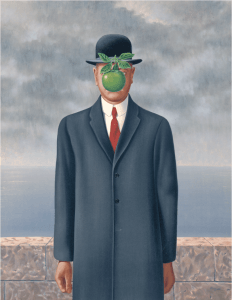
The Magritte exhibit was proof of that. It was exquisitely curated. But whether it was because I didn’t eat the mushrooms or because surrealism is a movement that appeared during the hour when the sun casts its shortest shadow, I found the curatorial effort behind the exhibit more compelling than the work itself. Sorry, but I was underwhelmed. Magritte (for my taste) is neither creepy enough, nor playful enough, nor philosophical enough to warrant bathing with. Spending that much time with that much of his work was a lesson in the limits of puns and dreams. There’s a reason that it appeals to children, and we are not living in child-like times. These are ugly, impoverished times. Wounded times. Magritte doesn’t help us negotiate them. So at the end of it, I went in search of some art that would explode in my face or deepen my emotions or fill me with awe. Give me some Kara Walker, please, or some William Kentridge. Like I said, SFMoMA has it all. Finally, I found myself looking at a bunch of paintings by Philip Guston. Read more »
by Scott F. Aikin and Robert B. Talisse
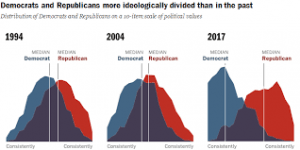
Popular political commentary from across the spectrum is replete with warnings social about “bubbles,” “silos,” and “echo chambers.” These are said to produce “closure,” “groupthink,” and an “alternate reality.” In turn, these forces result in the dysfunction of polarization, a condition where political officials and ordinary citizens are so deeply divided that there is no basis for compromise or even productive communication among them.
That polarization is politically dysfunctional might seem obvious. Where polarization prevails, the ground for compromise recedes, and so politics becomes a series of standoffs and bottlenecks. Yet politics still needs to get done. Hence democracy devolves into a numbers game of modus vivendi truces and strained compromises, resembling nothing like self-government among social equals.
In order to know what to do about polarization, we need a more precise view of what it is. It is helpful to distinguish (as we have elsewhere) between two different kinds of polarization: political polarization and belief polarization. The former refers to various ways of measuring the distance between political rivals. This distance can be conceived in terms of policy and platform divides or else in terms of inter-party antipathy. But in either case, where political polarization prevails, the common ground among politically opposed parties falls out, resulting in political deadlock. The latter, belief polarization, refers to a phenomenon to which we are all subject by which interactions with like-minded others transforms us into more extreme versions of ourselves. Read more »
by Amanda Beth Peery
There’s a door behind her ear—or
really in the fold
where the ear meets the skull
where a down of short brown hairs
nestles up to her ear-cup, the door
sometimes burns
and she drags one long fingernail
deep along the crease like an animal
scratching itself with a claw
to quiet whoever it is
who lives there—
she’s pretty sure it’s a door
but it could be a wall.
* * *
Here you have the ear parade
the hearing party
the masquerade
of ears that meet by the waterfront
under the train bridge where the waves
are at their reckless loudest—all
cloaked in deep fur muffs
or decorated with a little pretty lace
hanging from a hat
or jeweled with a flesh-tone hearing aid
like a prehistoric statue.
by Steve Gardner
 Magnus Carlsen and Fabiano Caruana faced off for the World Chess Championship over three weeks London. I’d been looking forward to the match all year, and following the progress of the two players towards it. This piece looks at the two players and the situation before the match, gives an account of the Championship games, and concludes with some reflections on the significance of the match for the participants, and for the sport.
Magnus Carlsen and Fabiano Caruana faced off for the World Chess Championship over three weeks London. I’d been looking forward to the match all year, and following the progress of the two players towards it. This piece looks at the two players and the situation before the match, gives an account of the Championship games, and concludes with some reflections on the significance of the match for the participants, and for the sport.
Before the Match
The Challenger – Fabiano Caruana
Caruana is the toughest test Carlsen has yet faced in a World Championship match: more creative and dangerous in attack than the stolid defensive master Sergey Karjakin, and younger and more formidable even than the great Vishy Anand, who, while he was one the greatest players of his generation, was well into his forties and past the peak of his playing strength in the two world championship matches he played against Carlsen in 2013 and 2014. Caruana had a poor start to the year at the Tata Steel tournament in Wijk aan Zee in January, but since then he has been in utterly brilliant form, winning not only the Candidates tournament in March to earn his right to play this match, but also the Grenke Chess Classic in April, the Norway Chess tournament in June, and (jointly with Carlsen and Aronian), the Sinquefield Cup in August. He also finished second in the US Championship. This sustained run of strong chess has seen his rating rise from 2799 at the end of 2017 to 2832, within 3 points of Carlsen, a statistical near-tie; this is the first time since Carlsen’s rise to the top of the chess rankings in 2012 that any player has been so close to him in rating. A single victory by Caruana during the match would see him overtake Carlsen and become the #1-ranked player in the world.
The Champion – Magnus Carlsen
Carlsen’s form in 2018 was slightly less impressive, though by no means bad. He won the Tata Steel tournament in January, the Fischer Random World Championship in February (defeating Hikaru Nakamura), the Shamkir Chess tournament in April, and as mentioned above shared first place in the Sinquefield Cup in August. He’s played many beautiful games in his characteristic boa constrictor style, squeezing out wins in long games out of technical endgame positions, including a memorable victory over Nakamura in the last round of the Sinquefield Cup, demonstrating a beautiful winning idea. But this year we have also seen some cracks appear in his normally impregnable composure, an un-Magnus-like indecisiveness at key moments, opponents allowed to escape lost positions, such as his game with Caruana at the Sinquefield Cup where Magnus misplayed a winning attack and Caruana escaped with a draw. His rating going into the match of 2835 had scarcely changed this year; if it hadn’t risen like Caruana’s, just maintaining a rating at these stratospheric heights is an impressive achievement. Still, Carlsen’s peak rating of 2882 (the highest ever by any human player) was achieved in May 2014, and is nearly 50 points higher than his rating now. So questions were in the air which the course of the match would amplify: what are the reasons for Carlsen’s rating decline? Would he be able to bring his best game to the match? And if not, would that be enough to keep Caruana at bay? Read more »
by Tim Sommers
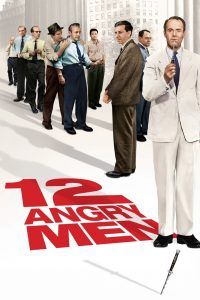 I recently rewatched “12 Angry Men” with The Philosophy Club at the University of Iowa as part of their “Owl of Minerva” film series. The 1957 film has the late, great Henry Fonda as the lone holdout on a jury ready to convict a poor, abused 18-year-old boy for allegedly stabbing his father to death. Over one long, tense evening (shown in something close to real-time), juror #8 – none of the jurors are identified by name, only number – forces the rest of the jury to methodically reexamined the evidence. It’s not a courtroom drama, it’s a jury-room drama in which only 3 of 1:36 minutes of running time take place outside the sweaty, claustrophobic jury room. The film is intense, moving, and effective. Afterwards, I made the following remarks.
I recently rewatched “12 Angry Men” with The Philosophy Club at the University of Iowa as part of their “Owl of Minerva” film series. The 1957 film has the late, great Henry Fonda as the lone holdout on a jury ready to convict a poor, abused 18-year-old boy for allegedly stabbing his father to death. Over one long, tense evening (shown in something close to real-time), juror #8 – none of the jurors are identified by name, only number – forces the rest of the jury to methodically reexamined the evidence. It’s not a courtroom drama, it’s a jury-room drama in which only 3 of 1:36 minutes of running time take place outside the sweaty, claustrophobic jury room. The film is intense, moving, and effective. Afterwards, I made the following remarks.
The number of jurors – the “12”, as they are starkly described in the 2007 Russian remake of “12 Angry Men” – is not entirely random. We have the Marquis de Condorcet, at least in part, to thank for that number. Condorcet was a moderate democrat during the French Revolution. He advocated universal suffrage and was an early advocate of universal primary education. He went into hiding after voting against the death penalty for Louis XVI, but was captured and died in his cell nine months later. Ironically, his warders had lost track of who he was by the time he died and he was identified only by the copy of Horace’s “Epistles” he had been carrying when he was arrested.
Condorcet had studied juries and concluded that, under the right circumstance juries and, by extension voting, is an extremely effective procedure for getting right answers. This was a consequence of his famous “Jury Theorem”. I won’t rehearse the mathematics here. But on an issue with two alternatives, where the decision is made independently by each participant, where there is also an objectively right decision, and each decision-maker has a greater than 50% chance of making that right decision a group of 5 or more people have a high likelihood of making the correct decision, a group of 12 has a higher likelihood of giving the correct verdict, and a group of a 1000 or more is nearly certain – out to several decimal places certain – to make the right call. In other words, if we think of a jury as a kind of procedure to determine the truth of a question, the more the better, but 12 makes a solid, practicable number. Read more »

Paula Rego. The Maids, 1987.
Acrylic on canvas-backed paper.
“The story at the heart of the painting came to Paula Rego ready-made in the form of Jean Genet’s play The Maids (1947), itself based on the real-life case of the Papin sisters, Christine and Lea, who worked as maids for a rich Parisian family. One day, frightened for no apparent reason other than that of a power cut which inconvenienced and possibly frightened the sisters, they brutally murdered the mother and daughter of the family while the man of the house was out at work. In working with the story, Paula Rego seems to have focused on the unnatural closeness of the sisters, both to each other and the mother and daughter they murder. Ambiguity and menacing psychosis reverberate within the picture, much of it carried in the objects with which the room is claustrophobically furnished. And isn’t there something uncertain about the sexuality of the seated figure?”
Note: Margit, this murder mystery is for you!
by Jalees Rehman

Why do people endorse political violence such as military attacks even if such violence is detrimental to their own self-interests? The US-led war against Iraq was supported by more than 70% of Americans within days of the invasion in March 2003, and even though the support dwindled over the course of subsequent months and years as it became obvious that Iraq did not possess weapons of mass destruction (WMDs) and had not posed a major threat to the US. One could surmise that the US public had simply been misled by its government about Iraq’s weapons program and the support was thus based on a rational self-interest calculation. The fear of being eviscerated by the supposed Iraqi WMDs convinced US citizens do approve of the war. The Iraq war came at a tremendous cost: It is estimated that at least two hundred thousand Iraqi civilians have been killed, with even more deaths attributed to the subsequent humanitarian and political crises precipitated by the war. The war also resulted in the deaths of several thousand American soldiers and a far greater number of American soldiers were wounded. From an economic perspective, it is estimated that at least one trillion dollars has been added to the national debt because of the war. This war was clearly against the self-interest of the American people, especially once it became obvious that Iraq did not possess WMDs. It is therefore all the more surprising that 40% of American adults continue to believe the military invasion of Iraq was the correct decision. Is this large segment of American society acting irrationally?
The psychologist Jeremy Ginges at the New School for Social Research in New York has been researching the reasoning behind political violence for more than a decade and recently summarized his work in the paper The Moral Logic of Political Violence. He has carried out psychological experiments enrolling Palestinian refugees and Israeli settlers as well as participants from countries across the world such as Nigeria and the United States, with remarkably similar results. Read more »
by Thomas Manuel
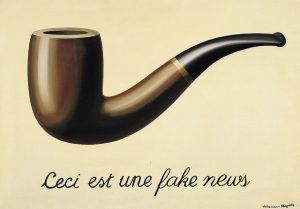
Recently, the BBC published a report on the experience of fake news in India titled ‘Duty, Identity, Credibility: Fake news and the ordinary citizen in India’. The report primarily consists of two parts. The first section is based on 40 interviews with Indian citizens and a week-long analysis of their social media habits. The second section is a network analysis of India’s fake news ecosystem on social media. In the former, they included a list of 15 twitter accounts followed by the country’s Prime Minster, Narendra Modi, that were known to have published at least one piece of fake news. This list included OpIndia, arguably the most popular right-wing digital news outlet in India. The website’s prompt and vociferous response in the form of factchecks and editorials provides the perfect opportunity to examine how right-wing media in India counteracts criticism.
In his essay in EPW Engage[1], Ajay Gudavarthi describes how the Right appropriates ideas from the Left and retools them to achieve the opposite of their original intention: “Right-wing populism has managed to turn the traditional progressive political practices on their head. A critique is absorbed or resignified from its original meaning… it is instructive to observe how the left-liberal critique of the class character of democratic institutions is usurped in legitimising an aggressive state that in fact makes institutions further dysfunctional to the peril of the socially and economically weak and in targeting the religious minorities.” This resonates with how the right-wing relates to journalism and its subordinate traditions. While there are examples of legitimate factchecks from right-wing media, there is simultaneously a fetishization of the vocabulary of fake news, factchecks and debunking.
These terms gained currency after Brexit and the 2016 US Presidential election where they were used to analyse highly successful disinformation campaigns run by right-wing organisations. Factchecking emerged as the primary tool to combat the explosion of disinformation on social media. But the right-wing has usurped this vocabulary, not to combat disinformation or make facts easier to pin down. Rather they enable the right-wing to perform a kind of ‘public’ rationality while still defending the irrational actions of the state. (This is not to say the right-wing is the only source of disinformation; the other political parties in India like the Congress are also guilty but it’s clear that the BJP pioneered the tactic and the rest are rushing to catch up.) Read more »
by Niall Chithelen
 It’s getting colder now in Beijing, and I can’t help but feel for the clothing left outside to dry. They had to hang through the night and on through the weak sunrise, doing their best to catch the wind before the temperature drops again. How do they feel being out there for passers-by to see, all exposed, caught up in the dust and very small toxic particles?
It’s getting colder now in Beijing, and I can’t help but feel for the clothing left outside to dry. They had to hang through the night and on through the weak sunrise, doing their best to catch the wind before the temperature drops again. How do they feel being out there for passers-by to see, all exposed, caught up in the dust and very small toxic particles?
I wonder if they catch cold when the temperature drops and they’re still damp. They might huddle together for warmth, but then they’d have to stay out longer, and no one wants that. Is it wrong to forget about them, or retrieve them late, only when it is convenient? Not for the fabric—which I have no idea about—but, you know, morally. They’ll survive, sure, but maybe they deserve better.
by Brooks Riley

by Shadab Zeest Hashmi
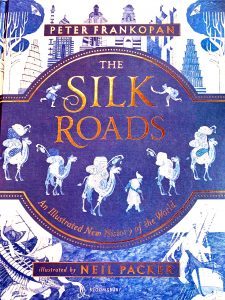 “You start with a scarf…each 90-by-90-centimeter silk carré, printed in Lyon on twill made from thread created by the label’s own silkworms, holds a story. Since 1937, almost 2,500 original artworks have been produced, such as a 19th-century street scene from Ruedu Faubourg St.-Honore, the company’s home since 1880. The flora and fauna of Texas. A beach in Spain’s Basque country” –- this is a fragment from an advertisement article for Hermès in this month’s issue of a luxury magazine. The article is called “The Silk Road.” Does it refer to the “Silk Road” in any way that justifies the title, beyond the allure of legend? No. Does it mention that the first scarves created for this very label, in 1937, were made with raw silk from China? No. Not necessary, not relevant to the target reader. In fact, the less we mention the “East” while trying to sell such luxury designer items, the better, aiming as we are for the rich collector, the global consumer of fashion (whether belonging to the East or West) willing to spend hundreds of dollars on a small square of silk, and more likely to associate such status symbols with Western Europe rather than with the “underdeveloped,” impoverished, overpopulated, conflict-ridden East.
“You start with a scarf…each 90-by-90-centimeter silk carré, printed in Lyon on twill made from thread created by the label’s own silkworms, holds a story. Since 1937, almost 2,500 original artworks have been produced, such as a 19th-century street scene from Ruedu Faubourg St.-Honore, the company’s home since 1880. The flora and fauna of Texas. A beach in Spain’s Basque country” –- this is a fragment from an advertisement article for Hermès in this month’s issue of a luxury magazine. The article is called “The Silk Road.” Does it refer to the “Silk Road” in any way that justifies the title, beyond the allure of legend? No. Does it mention that the first scarves created for this very label, in 1937, were made with raw silk from China? No. Not necessary, not relevant to the target reader. In fact, the less we mention the “East” while trying to sell such luxury designer items, the better, aiming as we are for the rich collector, the global consumer of fashion (whether belonging to the East or West) willing to spend hundreds of dollars on a small square of silk, and more likely to associate such status symbols with Western Europe rather than with the “underdeveloped,” impoverished, overpopulated, conflict-ridden East.
While silk has always been a coveted item, a symbol of wealth and power for millennia in many cultures around the world, the detailed, de-mythologized, accurate history of what we have come to know as the “Silk Road” is not only of little interest but has been deliberately suppressed in the West. Besides a vague connection with Marco Polo, most people usually draw a blank at its mention. During the many years that I have been working on (and presenting from) a trilogy of poetry manuscripts based on aspects of this history, I have come across few readers (including writers and academics) in the US who have a clear idea of the regions that have been, since antiquity, a part of these trade routes we call the Silk Road (or “’Seidenstrasse,” a term coined by the German historian Ferdinand von Richthofen in 1877) to define a network of land and sea routes of central and continuous importance to global trade as well as civilizational influences and the shifts in geographical borders around the world: a history that has been shaping not only how the world map looks from time to time, but how attitudes, knowledge, goods, technology, weapons, fashions, and even diseases and cures have been spreading across the continents and through the centuries. Read more »
by Nickolas Calabrese
 A few months back my boss and I had lunch with the person who, wearing a t-shirt that read “black death spectacle”, stood in protest in front of a painting of Emmett Till by Dana Schutz called Open Casket at the last Whitney Biennial. Shortly after his gesture another artist penned an open letter about how Schutz’s painting uses “black pain” as a medium, and how this use by non-Black artists needs to go. I’m not sure what the ethical verdict is (of whether or not Schutz made a gravely racist error), or whether the artist’s letter voiced an instance of over-reaching aesthetic censorship, nor will I make any attempt at trying to resolve that issue here; it would take far more space than what is available and is not my aim. Consider reading Aruna D’Souza’s recent book Whitewalling: Art, Race & Protest in 3 Acts for a thorough treatment (which, not so incidentally, the above mentioned protestor provided images for).
A few months back my boss and I had lunch with the person who, wearing a t-shirt that read “black death spectacle”, stood in protest in front of a painting of Emmett Till by Dana Schutz called Open Casket at the last Whitney Biennial. Shortly after his gesture another artist penned an open letter about how Schutz’s painting uses “black pain” as a medium, and how this use by non-Black artists needs to go. I’m not sure what the ethical verdict is (of whether or not Schutz made a gravely racist error), or whether the artist’s letter voiced an instance of over-reaching aesthetic censorship, nor will I make any attempt at trying to resolve that issue here; it would take far more space than what is available and is not my aim. Consider reading Aruna D’Souza’s recent book Whitewalling: Art, Race & Protest in 3 Acts for a thorough treatment (which, not so incidentally, the above mentioned protestor provided images for).
What I am interested in, however, is the broader idea of pain as a medium. That pain can be an aestheticized form is completely fascinating, and yet it has been employed since at least the Bible. We’re talking here about both physical and mental pains. How does one explain the benefits of painful aesthetics – of horror, of discomfort, of terror, of anything undesirable in real life; generally speaking, of pain – if pain is intrinsically undesirable for most people? Well I understand pain to be valuable as a tool for education and experience because pain, more than pleasure, has the tendency to traumatize the people who suffer it. In other words, it makes a lasting impression. Pleasure leaves an impression too, but it doesn’t traumatize, and that seems relevant to this discussion. Read more »